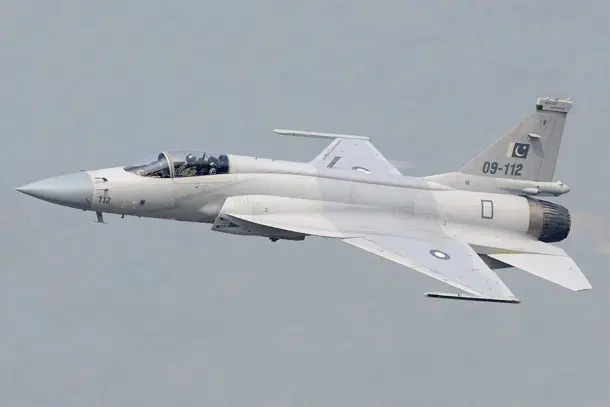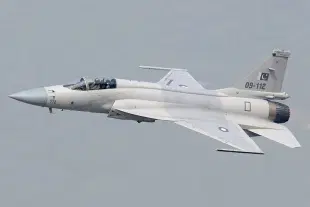News Brief
Four Chinese-Made PAF Jets, SAAB 2000, And Key Radars Were Among Pakistan’s Losses In Indian Strikes During Operation Sindoor: Report
Swarajya Staff
Jun 08, 2025, 09:56 AM | Updated 10:20 AM IST
Save & read from anywhere!
Bookmark stories for easy access on any device or the Swarajya app.


As the Indian armed forces marked one month since launching Operation Sindoor, official assessments reveal that Pakistan suffered extensive losses to its air assets, radars, and terror infrastructure — with key military systems neutralised in precision Indian strikes between 7 and 10 May.
According to a Hindustan Times report, there is digital evidence to conclude that Indian Air Force (IAF) fighter jets, ground-based missile systems, and the S-400 air defence system downed four Chinese-made Pakistani jets and two large military aircraft — likely a C-130J and a SAAB 2000 AWACS platform — during Operation Sindoor.
The HT report attributes this assessment to inputs from people familiar with the matter and action taken reports and damage reviews undertaken by the three armed forces.
In addition, at least two F-16 aircraft are believed to have sustained partial damage during the IAF’s targeted strikes on 11 airbases, including those at Sargodha, Rafiqui, Jacobabad, and Nur Khan (Chaklala, Rawalpindi).
India’s Rafale fighters, S-400 missile systems, and M777 howitzers are reported to have performed effectively during the four-day conflict, with the Russian-made air defence system shooting down three enemy aircraft.
The damage was not limited to aircraft. Indian missile strikes on 10 May reportedly destroyed high-value enemy radars, including a Chinese LY-80 fire radar, two US-made AN/TPQ-43 automatic tracking radars, and one fire unit of the HQ-9 system at Chaklala.
The scale and precision of the attack indicate significant degradation of Pakistan’s air defence grid.
Intelligence inputs have also revised previous estimates, indicating that Pakistan possesses four HQ-9 systems — twice the number originally estimated by national security planners.
Despite attempts to outmatch the IAF by deploying long-range PL-15 air-to-air missiles and mixing HQ-9 variants with different ranges, Pakistan failed to blunt the Indian assault.
The report noted that action taken reports reveal that the Indian Air Force (IAF) launched 19 BrahMos supersonic cruise missiles at Pakistani airbases, along with a similar number of French SCALP subsonic cruise missiles.
In response, Pakistan fired CM-400 AKG air-launched supersonic missiles from Chinese JF-17 fighters at Indian airbases, but these failed to inflict any damage.
Meanwhile, Turkish-made YIHA loitering munitions, used in large numbers by Pakistan, were either jammed by Indian electronic warfare systems, missed their targets, or were neutralised by India’s layered air defences.
Pakistan’s FATAH-1 rockets also failed to strike effectively, either missing the mark or being intercepted.
India’s counter-terror operations on 7 May also delivered a severe blow to key terrorist infrastructure in Pakistan.
The Lashkar-e-Taiba headquarters in Muridke was hit by Crystal Maze missiles, designed to penetrate deeply before exploding — inflicting heavy internal damage.
A Jaish-e-Mohammed facility at Markaz-e-Subhan Allah was completely destroyed in a pinpoint SCALP missile strike launched from Rafale jets using advanced bunker-busting techniques.
The Indian Army’s M777 howitzers, using US-made Excalibur ammunition, took out tier-2 defensive positions across the Line of Control, while Polish-made loitering munitions and Israeli systems deployed by the IAF and Navy targeted and destroyed several terror camps in Pakistan-occupied Kashmir.
Between 7 and 10 May, nine terror camps were bombed, and over 100 terrorists were killed.
The Indian Air Force also struck targets at 13 Pakistani airbases and military installations.
Operation Sindoor was launched by India in response to the terror attack in Jammu and Kashmir's Pahalgam in which 26 innocent people, mostly tourists, were killed by Pakistan-backed terrorists.





